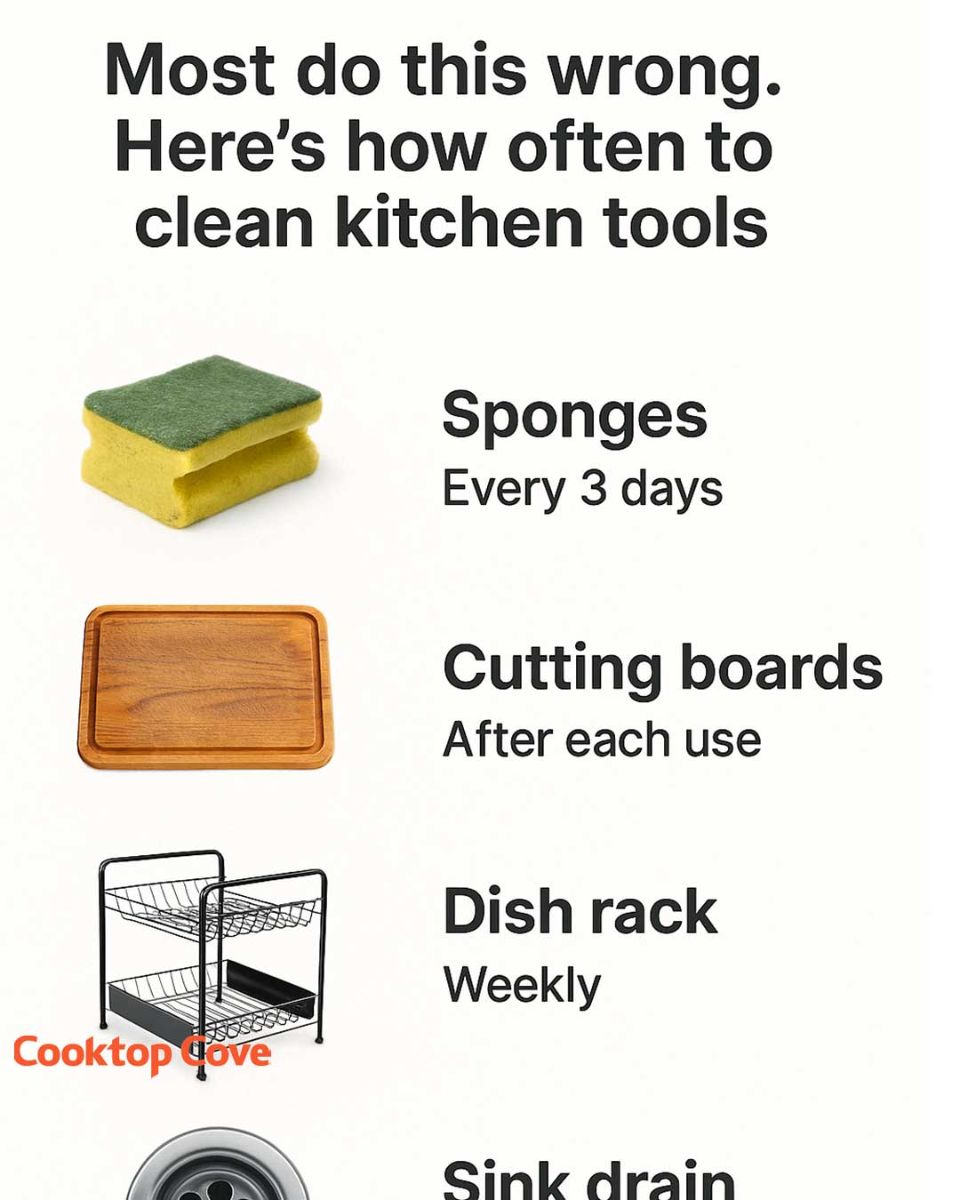Cutting boards, especially those used for raw meat, poultry, or seafood, should be cleaned immediately after each use to prevent cross-contamination. Wooden cutting boards can be scrubbed with hot, soapy water and then rinsed with a solution of 1 tablespoon of bleach per gallon of water. Plastic cutting boards can be placed in the dishwasher for a thorough clean.
To maintain the integrity of wooden cutting boards, it’s important to regularly oil them with food-grade mineral oil. This prevents the wood from drying out and cracking, which can harbor bacteria.
4. Dish Rack: Clean Weekly
Dish racks are often overlooked but can accumulate water deposits, soap scum, and even mold. To keep your dish rack clean, disassemble it weekly and wash it with warm, soapy water. Use a brush to scrub away any buildup, paying special attention to corners and crevices.
After cleaning, rinse the dish rack thoroughly and allow it to air dry completely before reassembling. This prevents mold and mildew from forming, keeping your dishes and utensils sanitary.
5. Sink Drain: Clean Monthly
The sink drain can become a breeding ground for bacteria due to the accumulation of food particles and grease. To clean your sink drain, pour a mixture of 1 cup of baking soda followed by 1 cup of vinegar down the drain. Allow it to sit for 15 minutes before flushing with hot water.
For a deeper clean, consider using a drain brush to scrub the inside of the drain pipe. This monthly routine will help prevent clogs and eliminate odors, ensuring your sink remains fresh and hygienic.
6. Knives: Clean After Each Use
Knives should be cleaned immediately after use to maintain their sharpness and prevent rust. Hand wash knives with warm, soapy water and dry them thoroughly with a clean towel. Avoid putting knives in the dishwasher, as the high heat and harsh detergents can damage the blade and handle.
Regularly honing your knives with a sharpening steel will keep them in optimal condition. Proper storage, such as in a knife block or on a magnetic strip, also helps maintain their quality and safety.
7. Blender and Food Processor: Clean After Each Use
Blenders and food processors should be disassembled and cleaned after each use to prevent residue buildup and bacterial growth. Wash the removable parts with warm, soapy water, and use a brush to clean the blades carefully. Some parts may be dishwasher safe, but always check the manufacturer’s instructions.
For a quick clean, you can fill the blender halfway with warm water and a drop of dish soap, then run it on high for 30 seconds. Rinse thoroughly and dry all parts before reassembling.
8. Coffee Maker: Clean Monthly
Coffee makers can accumulate mineral deposits and coffee oils over time, affecting the taste of your brew. To clean your coffee maker, fill the reservoir with equal parts water and white vinegar. Run a brewing cycle, then run two more cycles with fresh water to rinse.
For single-serve machines, remove and clean the pod holder and drip tray regularly. This monthly cleaning routine will ensure your coffee maker continues to produce great-tasting coffee.
9. Oven Mitts and Dish Towels: Clean Weekly
Oven mitts and dish towels can harbor bacteria and odors from frequent use. Wash them weekly in hot water with a quality laundry detergent. If possible, use a disinfectant laundry additive to kill germs.
Ensure that oven mitts and dish towels are completely dry before storing them to prevent mold and mildew. Regular washing will keep them fresh and extend their lifespan.
10. Refrigerator Shelves: Clean Monthly
Refrigerator shelves can become sticky and stained from spills and leaks. To clean them, remove the shelves and wash them with warm, soapy water. Rinse and dry thoroughly before placing them back in the fridge.
Wiping down the interior walls of the refrigerator with a solution of equal parts water and vinegar will help eliminate odors and keep your fridge fresh. This monthly cleaning routine will ensure your food storage is hygienic.
11. Microwave: Clean Weekly
Microwaves can quickly become splattered with food particles and grease. To clean your microwave, place a microwave-safe bowl filled with water and a few slices of lemon inside. Heat on high for 5 minutes, then let it sit for another 5 minutes to allow the steam to loosen grime.
Wipe down the interior with a damp cloth, paying attention to the ceiling and door. This weekly cleaning routine will keep your microwave smelling fresh and functioning efficiently.
12. Can Opener: Clean After Each Use
Can openers often come into contact with food and can harbor bacteria if not cleaned properly. After each use, wash the cutting wheel with warm, soapy water and use a brush to remove any stuck-on food particles.Rinse thoroughly and dry completely to prevent rust. Regular cleaning will ensure your can opener remains sanitary and in good working condition.
ADVERTISEMENT

